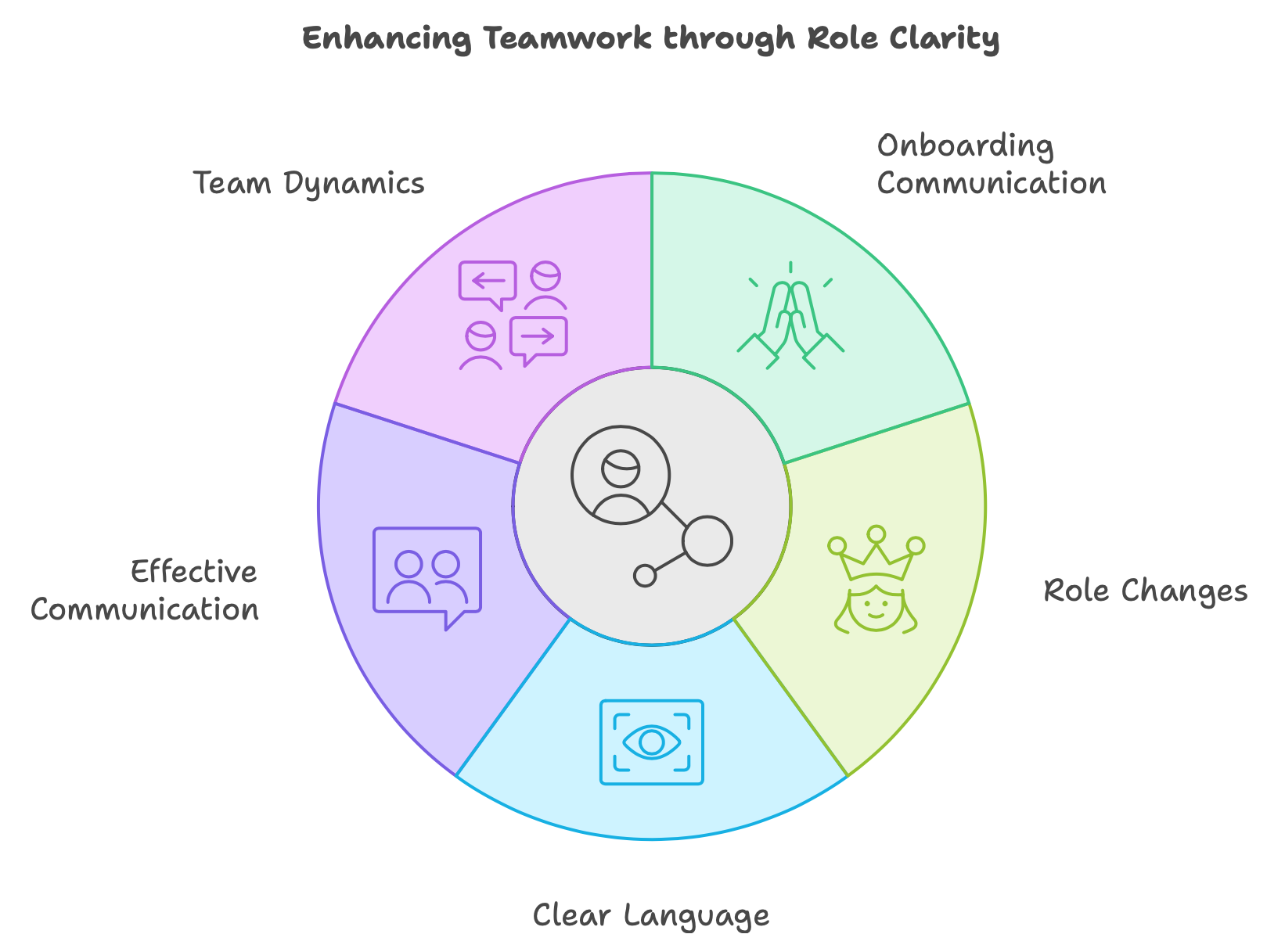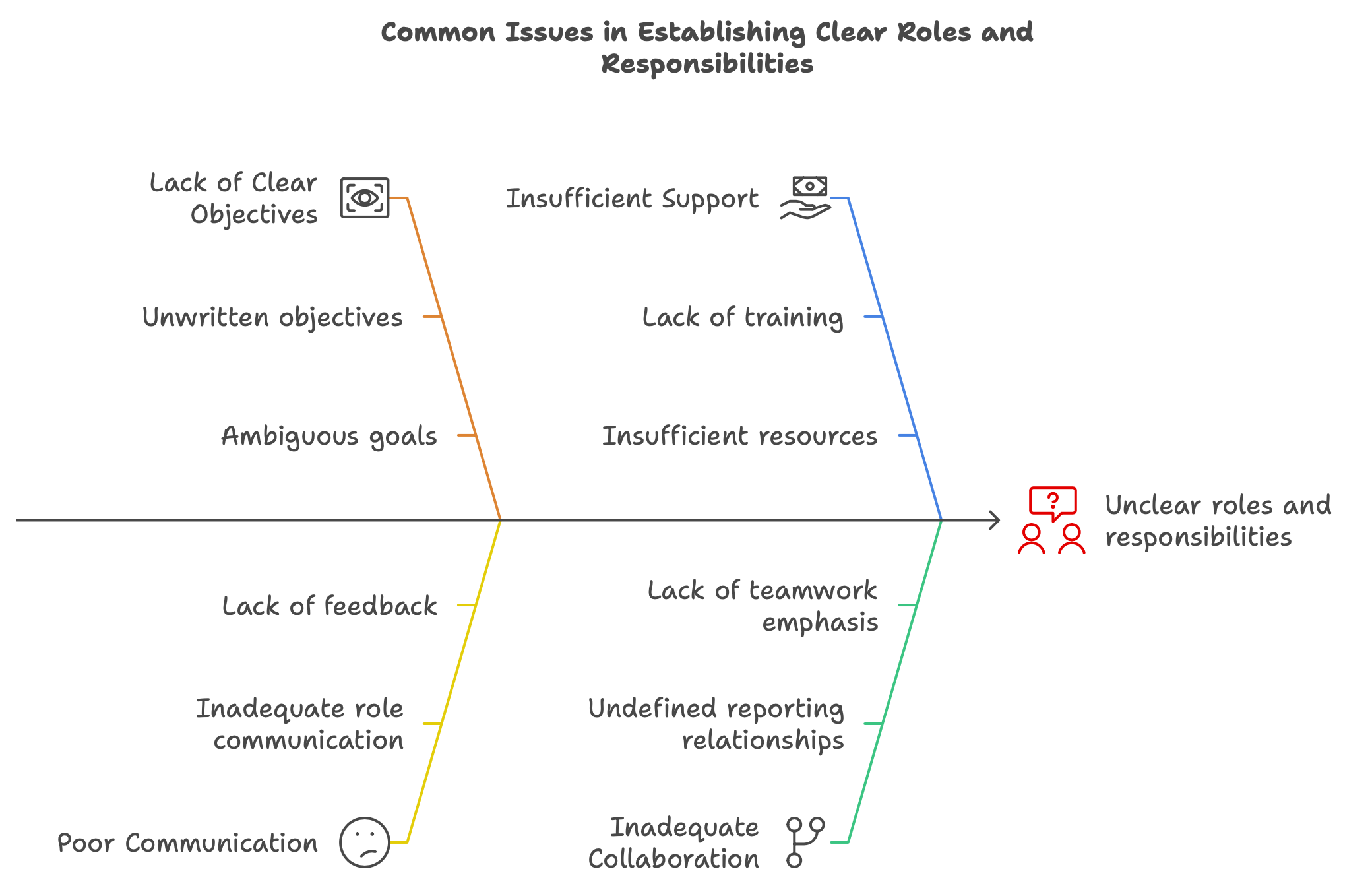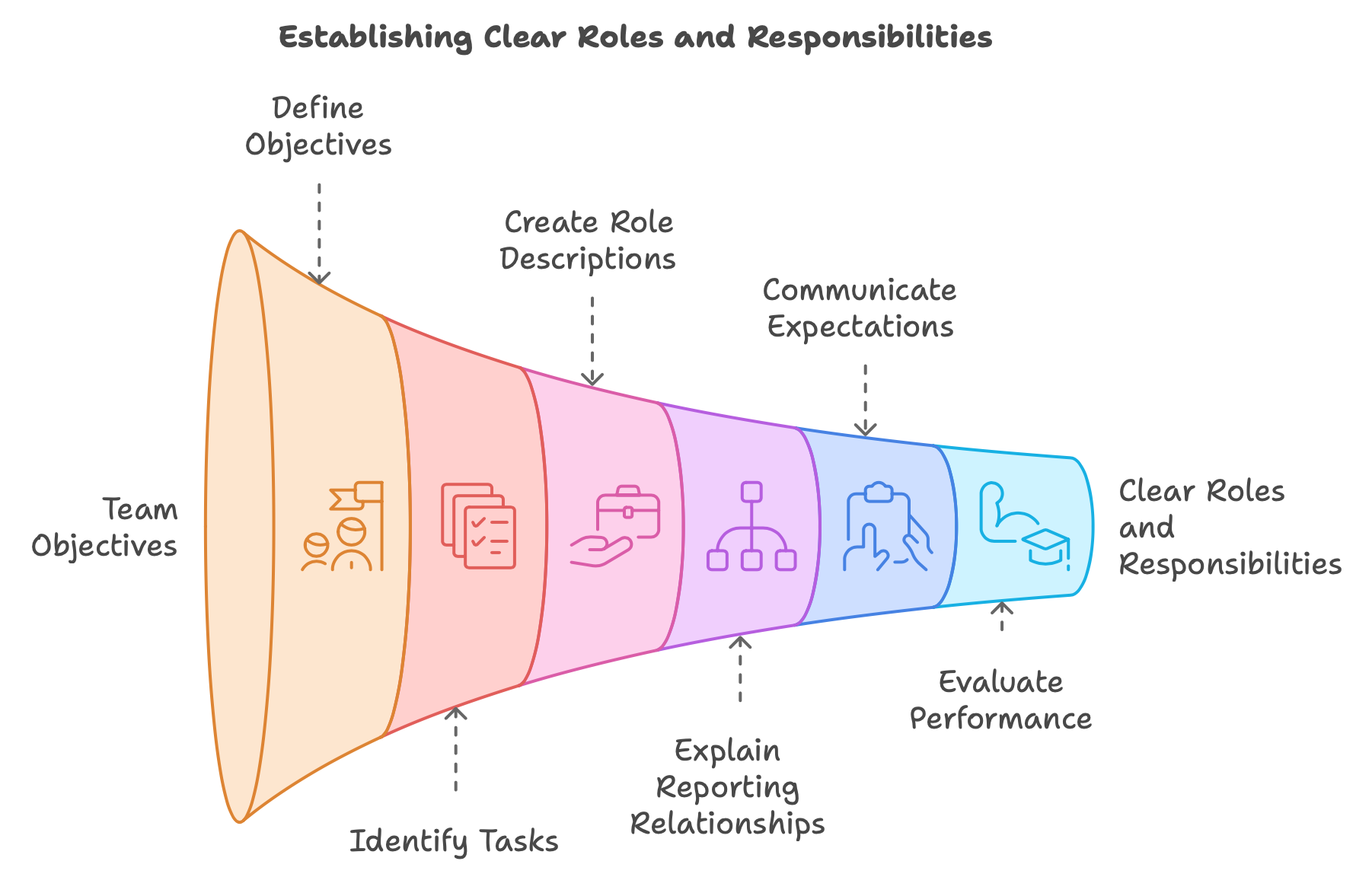Unlocking Team Potential: The Power of Clearly Defined Roles and Responsibilities
Establishing clear roles and responsibilities is crucial for ensuring effective teamwork, accountability, and productivity within an organization or a team. Clear roles and responsibilities provide clarity on who is responsible for what tasks, decisions, and outcomes, and help avoid confusion and overlap. Read also: Guide: HR’s Role in Team Management and Preventing Burnout
The first aspect is to clearly communicate roles and responsibilities during the onboarding process for new team members.
The first aspect is to clearly communicate roles and responsibilities during the onboarding process for new team members.

This includes providing an overview of the organization, sharing role descriptions, explaining team dynamics, discussing goals and objectives, and setting clear expectations. This helps the new team member understand their role, responsibilities, and how they fit into the team and organization.
The second aspect is related to regular work and addressing changes in roles and responsibilities. When there are changes in a team member's role, it is important to promptly establish a definition of the new role and clearly communicate the revised responsibilities. This ensures that the team member is aware of their updated responsibilities and can align their work accordingly.
By addressing both aspects, organizations can create a culture of role clarity, effective communication, and continuous alignment, which contributes to improved teamwork, productivity, and overall success.
Use clear and concise language: Write responsibility statements using clear and concise language. Avoid ambiguity or vague terms. Clearly articulate what needs to be done and the expected outcomes.

Here are some steps to establish clear roles and responsibilities:
1. Define the overall objectives in written: Start by clearly defining the objectives and goals of the team or organization. This provides a framework for determining the roles and responsibilities needed to achieve those objectives.
2. Identify key functions and tasks in written: Identify the key functions and tasks and activities required to achieve the objectives. Break down the work into smaller components and determine which roles are responsible for each task or function. Document the defined responsibilities in a format that is easily accessible to all team members.
3. Create role descriptions in written: Develop detailed role descriptions for each role or position within the team or organization. Job descriptions should outline the primary responsibilities, required skills and qualifications, reporting relationships, and any other relevant information.
2. Identify key functions and tasks in written: Identify the key functions and tasks and activities required to achieve the objectives. Break down the work into smaller components and determine which roles are responsible for each task or function. Document the defined responsibilities in a format that is easily accessible to all team members.
3. Create role descriptions in written: Develop detailed role descriptions for each role or position within the team or organization. Job descriptions should outline the primary responsibilities, required skills and qualifications, reporting relationships, and any other relevant information.

4. Clearly explain reporting relationships: Determine the reporting relationships within the team or organization. Clearly define who reports to whom, who has decision-making authority, and who is responsible for supervising and supporting others.
5. Communicate expectations: Clearly communicate the roles, responsibilities, and expectations to all team members. Ensure that everyone understands their specific responsibilities and how their roles contribute to the overall objectives.
6. Encourage collaboration: While defining individual roles, also emphasize the importance of collaboration and teamwork. Clarify where responsibilities overlap and where collaboration is necessary to achieve common goals.
7. Regularly review and update: Roles and responsibilities may evolve over time due to changes in objectives, team dynamics, or organizational needs. Regularly review and update the roles and responsibilities as necessary to ensure they align with the current priorities and objectives.
8. Provide support and resources: Ensure that team members have the necessary support, resources, and training to fulfill their roles effectively. Address any gaps in skills or resources through training programs, mentoring, or redistributing responsibilities.
9. Foster open communication: Encourage open communication within the team or organization. Team members should feel comfortable discussing their roles, responsibilities, and any challenges they face. This helps identify and address issues promptly.
10. Evaluate performance: Regularly evaluate individual and team performance against defined roles and responsibilities. Provide feedback, recognize achievements, and address any performance issues or gaps through coaching or development plans. Offer training and development opportunities to support team members in understanding their roles and acquiring necessary skills. This can include internal workshops, external courses, or mentorship programs.
11. Lead by example: Leaders and managers should set the example by clearly defining their own roles and responsibilities and communicating them to the team. This reinforces the importance of role clarity and accountability.
Remember, establishing clear roles and responsibilities is an ongoing process that requires continuous communication, collaboration, and adaptation. Regularly revisit and refine the roles and responsibilities as the team or organization evolves and grows.
In fast-paced environments like startups and scale-ups, it's even more important, but common for role and responsibility definition to be overlooked or not given enough attention. However, it's crucial to establish clarity from the beginning to set the team up for success.
I recommend you to read related articles:
From Startup to Unicorn: How Corporate Culture and Talent Acquisition Evolve Together
Promotions Gone Wrong: From Star Performer to Struggling Leader
No Money, No Problem: 10 Ways to Motivate Your Team
Implementing KPIs Without Losing Your Team’s Trust and Motivation
UnitiQ: Helping You Define Roles for a Stronger, More Productive Team
At UnitiQ, we understand how important it is for everyone on your team to know exactly what they’re responsible for. That’s where our Fractional HR and Interim CHRO services come in. We’ll work with you to make sure each team member knows their role, whether you're onboarding new hires or adjusting roles in a fast-moving environment. When everyone’s clear on what they need to do, teams just work better. Let’s chat and figure out how we can help you get your team aligned and moving in the right direction.
Contact me, Olga Fedoseeva, Fonder at UnitiQ, directly:
My Telegram
My LinkedIn
Contact me, Olga Fedoseeva, Fonder at UnitiQ, directly:
My Telegram
My LinkedIn
